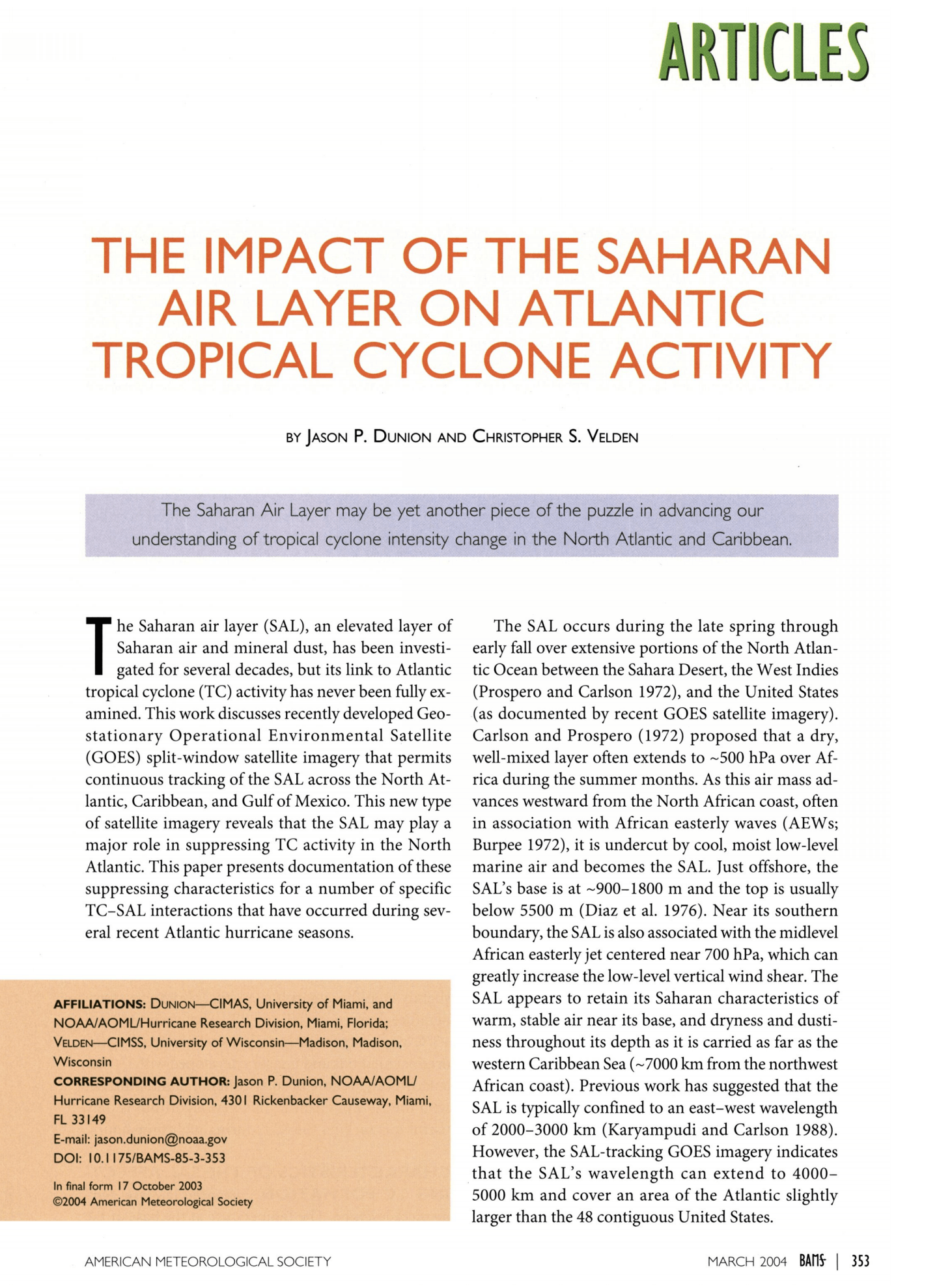Dunion, J. P., & Velden, C. S. (2004). The impact of the Saharan air layer on Atlantic tropical cyclone activity. Bulletin of the American Meteorological Society, 85(3), 353-366.
Abstract:
A deep well-mixed, dry adiabatic layer forms over the Sahara Desert and Shale regions of North Africa during the late spring, summer, and early fall. As this air mass advances westward and emerges from the northwest African coast, it is undercut by cool, moist low-level air and becomes the Saharan air layer (SAL). The SAL contains very dry air and substantial mineral dust lifted from the arid desert surface over North Africa, and is often associated with a midlevel easterly jet. A temperature inversion occurs at the base of the SAL where very warm Saharan air overlies relatively cooler air above the ocean surface. Recently developed multispectral Geostationary Operational Environmental Satellite (GOES) infrared imagery detects the SAL’s entrained dust and dry air as it moves westward over the tropical Atlantic. This imagery reveals that when the SAL engulfs tropical waves, tropical disturbances, or preexisting tropical cyclones (TCs), its dry air, temperature inversion, and strong vertical wind shear (associated with the mid-level easterly jet) can inhibit their ability to strengthen. The SAL’s influence on TCs may be a factor in the TC intensity forecast problem in the Atlantic and may also contribute to this ocean basin’s relatively reduced level of TC activity.
